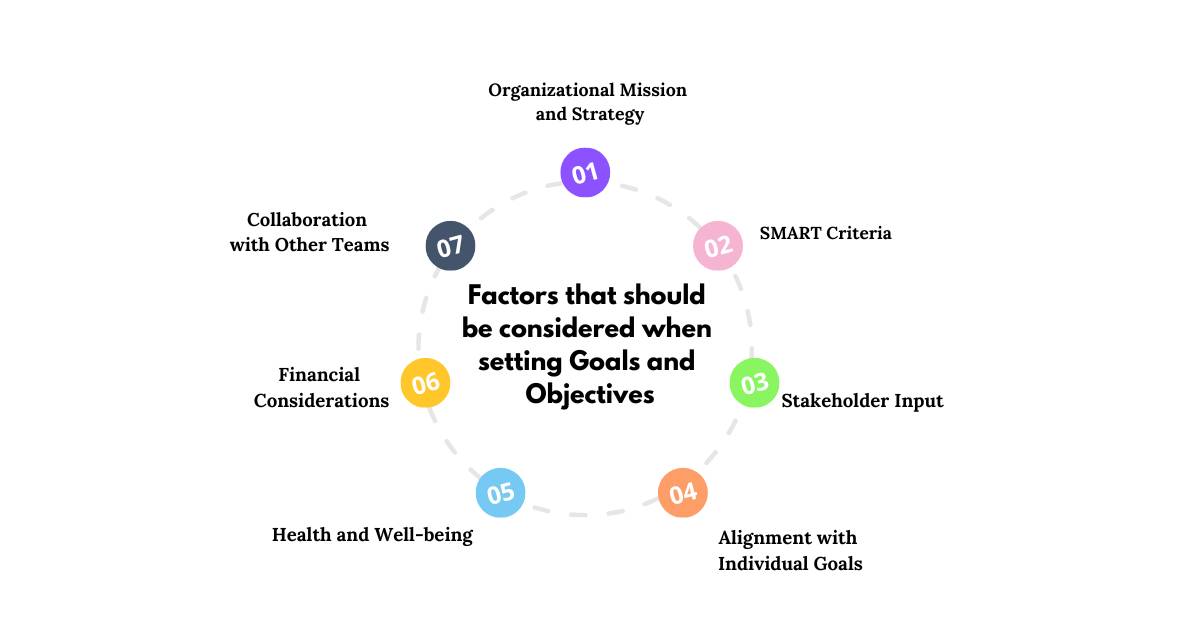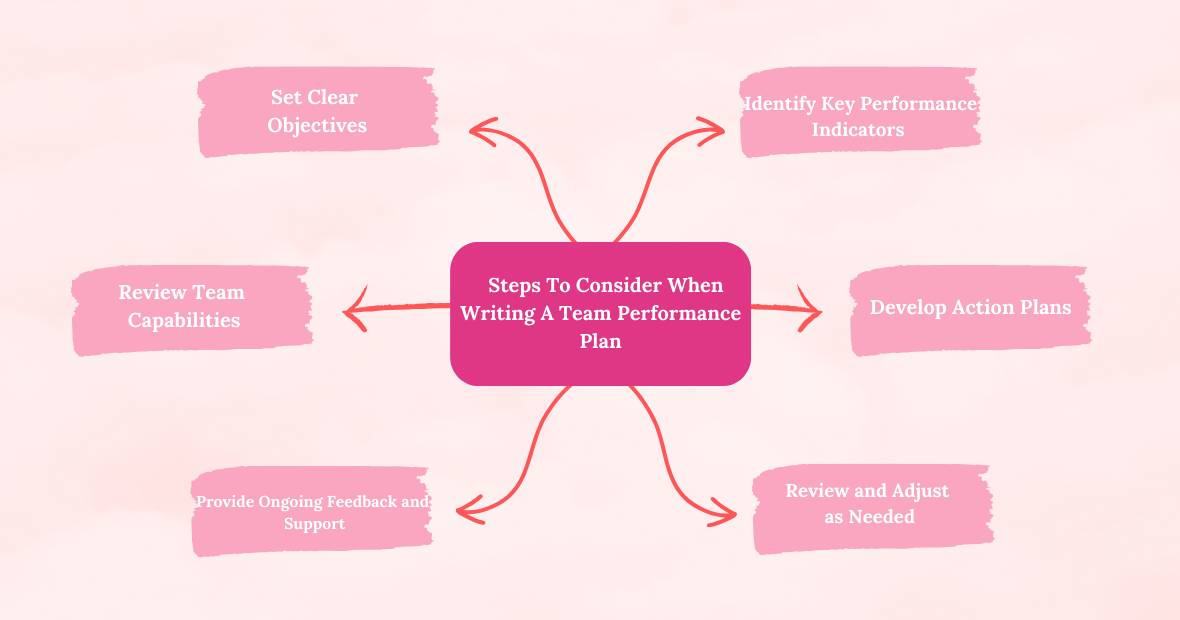Think about a situation in which all employees of a particular team are inspired and have a clear understanding of the goals to be achieved. Imagine the feeling of reaching goals, not by accident, but with the help of a plan that brings out the best in your team. This is not just a dream, this is the reality that a good team performance plan can build.
In the present world, characterized by high levels of competition, the effectiveness of organizational teams is a key factor in organizational success. The unity of people and their collective actions turn the gears of change and development. This collaboration is unlocked by a well-designed team performance plan that promotes accountability and collaboration and encourages constant improvement.
What Is a Team Performance Plan?
A team performance plan is a detailed approach that maps out the objectives and methods for a team to achieve its goals efficiently. It serves as a roadmap for the team, guiding them on how to achieve their targets in the best possible way. This plan explains how the team should work to achieve its goals and objectives efficiently and effectively with the support of all the team members.
When the roles and responsibilities are defined, the team members will know what is expected of them for the team and how their work will benefit them in achieving the organizational goals. This not only helps in controlling the performance but also provides opportunities to correct and improve the performance continuously, boosting the efficiency and performance level of the team and the organization.
Why Team Performance Plan is Important?
It is important to have a team performance plan to achieve the best results for your organization. Here are the key reasons why we should have a team performance plan.
- It makes sure that all the members of the team are aware of the goals and the roles that each of them is supposed to fulfil in the achievement of those goals. This alignment minimizes confusion and guarantees a clear direction of where the organization is heading.
- A performance plan for a team involves having meetings and reviews at regular intervals to check on the performance of the team members and to make sure that they are on the right track.
- They can also pinpoint areas that need the members to be trained or developed, thus helping the team in improving its capability.
- Team performance plans allow the leaders, members, and stakeholders to review the team’s performance and the factors that may be causing it to underachieve.
- A team performance plan results in high engagement since the team members understand their roles, significance, and contribution towards the achievement of the team goals and strategies. With engagement, the team members will be more satisfied with their work, and the team’s productivity will also be improved.
- A good team performance plan helps in delivering quality output, which in turn increases customer satisfaction.
- By team performance plan, teams can avoid potential risks and have alternative plans to make project implementation less problematic.
What Factors are Considered When Setting Team Goals and Objectives?
The process of setting goals and objectives for the team is very important in the achievement of organizational objectives. It requires the consideration of several factors to achieve the right fit for the company’s mission and vision.

1. Organizational Mission and Strategy:
The goals your team sets should be in line with the overall vision and the organization’s strategic plan. This means the awareness of the company’s activities, the purpose of the activities, and the organization’s plans. When you align your team’s goals to this broad mission and plan, you will be on the right track with the organization’s mission and its sustainability.
2. SMART Criteria:
SMART is an acronym that is used in developing goals and it stands for specific, measurable, achievable, relevant and time bound. First, specify what you want to do at a high level of detail. Subsequently, set measurable and achievable goals. Ensure that the goal is in line with the organizational goals and objectives and will help in the achievement of the long-term organizational goals. Lastly, it is recommended to attach a time frame to the goal so that it becomes more pressing.
3. Stakeholder Input:
The goals should be set with the help of the stakeholders, including the team members, leaders, clients, and customers. This requires asking them what they need, their perception of the goals that are set, and what they would like to achieve. You receive the necessary information, and the stakeholders will be more committed to the goals.
4. Alignment with Individual Goals:
When the goals set for the team are in line with individual goals, it encourages teamwork and makes the team more productive.
5. Health and Well-being:
It is important to establish goals that will help ensure the team members are healthy and happy. This includes goals such as having a better work-life balance and reducing stress in the workplace. When people are healthy and happy, they can work to their best and enjoy what they are doing.
6. Financial Considerations:
In this case, it is important to look at the financial resources that your team has when setting goals. This includes the cash available in the budget that can be spent to achieve the laid-down objectives. This way, you can set goals that are realistic as much as they are achievable depending on your financial resources.
7. Collaboration with Other Teams:
This is because for a team to be effective in its operations it must be in harmony with other teams or departments in the organization. This way, teams can avoid duplication of efforts, discover areas of overlap, and coordinate in achieving goals. This collaboration helps in the formulation of a clear plan throughout the organization, which leads to better performance, productivity, and outcomes.
What are Some Steps to Consider When Writing a Team Performance Plan?
When developing a team performance plan, consider the following steps to make it more effective which leads to achieving goals.

- Set Clear Objectives: List down the activities the team needs to perform in the project. These goals should be in line with what the organization wants and should be SMART.
- Identify Key Performance Indicators (KPIs): Determine the criteria that will help review the team’s performance. These measurements should indicate whether the team is performing to the expected standards.
- Review Team Capabilities: Identify the strengths and weaknesses of the team. Figure out if there are elements that we must familiarize ourselves with or improve on to complete the project.
- Develop Action Plans: It is important to have a clear and specific idea of how we are going to achieve the things that need to be achieved. These should be well-defined and indicate when and how something must be done.
- Provide Ongoing Feedback and Support: It is important to monitor the team’s performance against the set goals and objectives at regular intervals. If the team members are struggling, let them know and help them.
- Review and Adjust as Needed: It is necessary to review the team’s performance plan sometimes to determine its efficiency. If there are some changes or new issues appear, change the plan to make it effective.
Wrap Up
A team performance plan is a roadmap to success. It indicates that you have confidence in your team and are willing to stand behind them. It is important to set goals, identify strengths and weaknesses, and define roles to achieve success. Just like a pit crew ensures a race car is fine-tuned, we need to plan, and communicate through feedback and adjust as needed throughout the process. This plan ensures that everyone is on the same page and working towards the same goal.
Frequently Asked Questions
A team performance plan is a management tool that provides direction for a team by defining goals, and tasks. It also consists of timelines, resources, communication plans, risk management, and performance measurement to improve the achievement of organizational goals and objectives.
A team performance plan is important because it helps all the members of the team understand what they are supposed to do and what is expected of them. It synchronizes personal and organizational goals, reduces confusion, increases responsibility, improves excellence, and in the long run, improves team and organizational performance.
KPIs are performance measures used to monitor the team’s performance regarding the goals and objectives. They provide a clear vision of performance, making it easier to identify areas that require improvement.
A team performance plan promotes teamwork by setting clear goals, defining roles, encouraging open communication, integrating feedback, and acknowledging individual efforts.
A team performance plan should be revised sometimes to ensure it is effective. This could be done every month, every six months, or once a year depending on the size and length of the project. The plan needs to be adjusted to new conditions and emerging issues, which is why its regular revisions are useful.
The team performance plan cannot exist without leadership. Leaders offer direction and support when needed. They coordinate and manage resources. They also oversee the activities of the team, identify problems, and make the right decisions that will help the team achieve its goals.
Some of the challenges include people’s opposition to change, lack of communication, lack of resources, and the plan not being in line with the organization’s goals and objectives.
It can help make teams more creative by allowing them to try out new things, take calculated risks, and share their ideas. When goals are set at a level that is challenging but not impossible, the teams are motivated to look for ways to achieve the set goals.
A team performance plan can improve diversity and inclusion by promoting equal opportunities, respecting diversity, and incorporating diversity factors into decision-making. By considering the goals and values of the different team members, it becomes easier to get better results and make more creative decisions since the individuality of each team member is considered.
It can help improve
customer satisfaction
and loyalty because the
team’s goals and
objectives will be set
according to the
customers. Through the
concept of quality,
speed, and continuous
improvement, the teams
can deliver products and
services that meet or
exceed the expectations
of the customers, hence
improving satisfaction
and loyalty levels of
customers.






